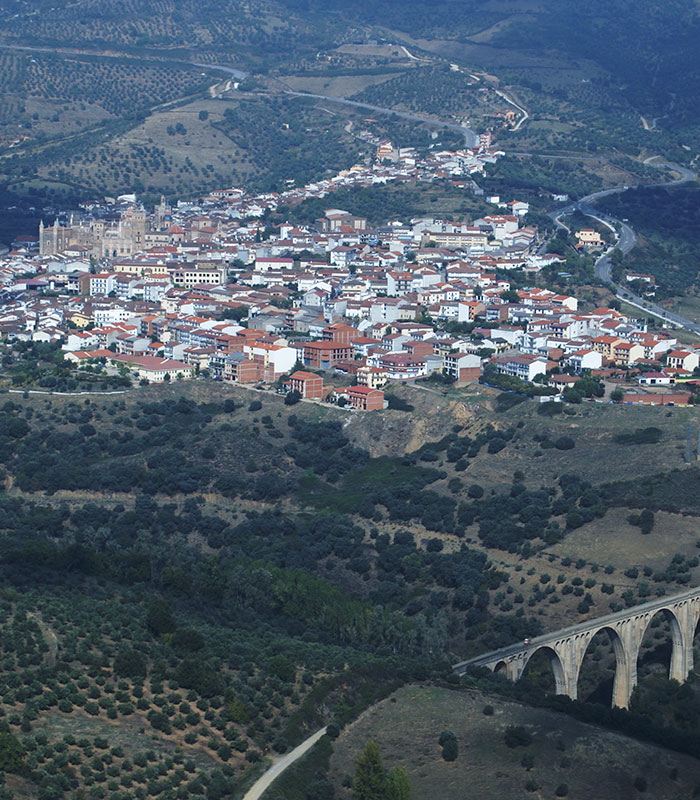In the 1920s a railway line was approved which was to connect Badajoz, Madrid, and Huelva via Villanueva de la Serena and Talavera de la Reina. The wild foothills of Las Villuercas finally proved to be an insurmountable obstacle and led to the abandonment of the project thirty-five years after its initiation. As a memory of that ill-fated enterprise today we are left with a grandiose viaduct on the doorstep of Guadalupe crossing the rugged valley of the Guadalupejo from one side to the other.
It was during the dictatorship of Primo de Rivera when the decision was made to undertake the work to achieve a faster train connection between Madrid, Extremadura, and the west of Andalusia in the form of the line from Villanueva de la Serena to Talavera de la Reina via Las Villuercas. The railway line of Las Villuercas, popularly known as ‘La Vía’, was to have a length of 168 kilometres and 19 stations. Its construction soon faced the enormous difficulties of the relief of these mountain areas. In particular great problems were posed by the Puerto Llano of Cañamero owing to the geological fault located there. Its rocks are not only extremely hard but were too fragmented to allow the tunnel which was to pass through the mountain to be completed; several attempts to perforate the rock ended in landslides.
The Civil War and its subsequent hardships also affected the development of the railway project and led to its being abandoned for years. After a huge investment effort and with only 20 kilometres remaining to finish the anticipated route, in the 1960s it was finally considered unviable and abandoned forever. The Las Villuercas railway thus became an impossible dream.

